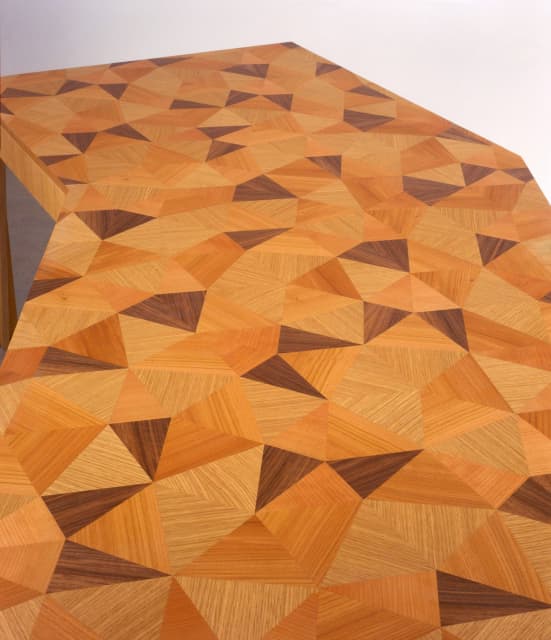'The shape of the Einstein table upset was inspired by the design of Einstien's laboratory in the 1920s: the Einstein Tower, by architect Erich Mendelsohn, in Berlin. Because of its cylindrical shape, long continuous table space was not available for scientists to work on in the lab. Mendelsohn had to design furniture that could "turn corners", which inspired Eliasson's own multi-angled table. As James Lavender describes, "the Einstein table proposes a dialogue between those who are sitting around the table that is not, as usual, square and one where individuals sit in a clear opposition to one another. Instead, if the table is used as such, there are new angles of communication and connection between the sitters, or between the individual and the space where the table might be set."'
(Cecilia Fajardo-Hill, 'Politics of the Everyday', from Fortunate Objects: Selections from the Ella Fontanals-Cisneros Collection, 2007, p. 22-30)

